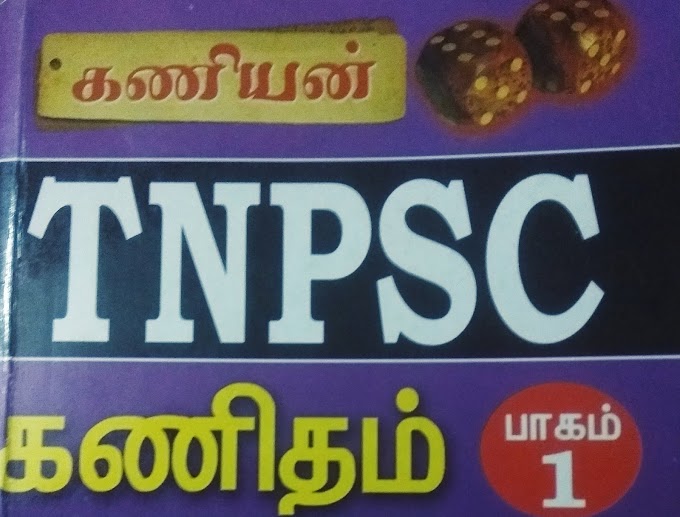PART-IV
Science and Technology
1.)Kilogram Redefined
- In a historic judgment, at the 26th CGPM, General Conference on Weights and Measures, in Versailles, Paris more than 60 nations came together to vote unanimously for a new system that redefines the kilogram.
- Along with the kilogram three other units, the ampere (electrical current), the kelvin (thermodynamic temperature) and the mole (amount of a substance) were redefined at the conference.
- It is arguably the most significant redefinition of an SI unit since the 'second' was recalculated in 1967, a decision that helped ease communication across the world via technologies like GPS and the internet.
- Need For Change
- The kilogram has been defined since 1889 by a shiny piece of platinum-iridium kept in a special glass case, the International Prototype of the Kilogram (IPK), also known as Le Grand K (The Big K). It is housed at the headquarters of the International Bureau of Weights and Measures (BIPM), just outside Paris.
- The issue is that the IPK doesn't always weigh the same. Even inside its three glass bell jars, it picks up micro particles of dirt and is affected by the atmosphere. Sometimes it needs cleaning, which can affect its mass which can have profound implications. If the prototype were to lose mass, atoms would, in theory, weigh more since the base kilogram must by definition always weigh a kilogram.
- Hence, the scientists wanted to create a measurement system that is based entirely on unchanging fundamental properties of nature.
- Now the kilogram will be defined by a tiny but immutable fundamental value called the Planck Constant
2.)HysIS
- ISRO has successfully launched the PSLV-C43 mission that carried HysIS (Hyper Spectral Imaging Satellite) as part of its payload. This was the 45th launch flight of the polar satellite launch vehicle (PSLV) rocket.
- The satellite was accompanied by 30 other satellites developed by various nations, including 23 from the US and had a combined payload of 641.5kg
- The heart of the system required for the satellite is an optical imaging detector chip which was indigenously designed and developed by Isro's space application centre and fabricated at a semiconductor lab in Chandigarh.
- The objective of the probe is to monitor the Earth’s surface within a bandwidth of 400nm-2500nm wavelength. This includes visible, near infrared and far infrared bands of the electromagnetic spectrum.
- It can be used for an array of activities from monitoring the crops, environmental monitoring, water management, atmospheric activity monitoring, coastal patterns, looking for minerals and oil, military surveillance, while also assisting studies of Earth’s magnetic field all of which need visuals that show a high level of differentiation of the scene or object.
- It has been projected into a polar synchronous orbit, which sets it in motion along the axis that runs along the Earth’s geographic North and South Pole. With its orbit, it will remain at the same position relative to the sun throughout its five-year mission, which ends in 2023.
3.)GSAT 29 Launch
- ISRO’s GSAT-29 communication satellite was recently launched successfully by the second developmental flight of Geosynchronous Satellite Launch Vehicle Mark III (GSLV Mk III-D2) from the Satish Dhawan Space Centre, Sriharikota.
- It was launched into an elliptical Geo Transfer Orbit (GTO) with a 190 km perigee, the point in the orbit of the moon or a satellite at which it is nearest to the earth, and 35,975 km apogee, the farthest or highest point.
- It is a communication satellite with two separate payloads (Ku-band and Ka-band) designed to improve telecommunication and internet services under the Digital India program in remote areas in the country, especially Jammu and Kashmir and the North-East.
- It is a multiband, multi-beam communication satellite, intended to serve as a test bed for new and critical technologies.
- Weighing 3,423 kg at lift-off, GSAT-29 is the heaviest satellite to be launched from India. With a mission life of 10 years, it is the 33rd communication satellite built by ISRO.
- In addition, the Q/V-Band communication payload onboard is intended to demonstrate the future high throughput satellite system technologies.
- It also carries a Geo High-Resolution Camera which will carry out high resolution imaging and the Optical Communication Payload will demonstrate data transmission at a very high rate through optical communication link.
- GSLV Mk III is a three-stage heavy lift launch vehicle developed by ISRO. The vehicle has two solid strap-ons, a core liquid booster and a cryogenic upper stage.
- It is designed to carry 4 ton class of satellites into Geosynchronous Transfer Orbit (GTO) or about 10 tons to Low Earth Orbit (LEO), which is about twice the capability of GSLV Mk II.
- With the success of this launch, the developmental phase of the GSLV Mk III vehicle programme will be complete and the vehicle’s operational phase will begin. The success of GSLV Mk III-D2 marks an important milestone in Indian space programme towards achieving self-reliance in launching heavier satellites, as it is currently dependent on European launchers to put heavy satellites in space.
- The first operational mission of this vehicle will be the Chandrayaan-II mission in January next year. It will also be used for the Gaganyaan mission wherein ISRO has set a target of achieving the country’s manned mission to space by 2021, with the first unmanned programme planned for December 2020.
4.)CSE Awarded Indira Gandhi Prize
- Centre for Science and Environment (CSE), the New Delhi based independent research and advocacy think tank, has been awarded and the Indira Gandhi Prize for Peace, Disarmament Development.
- The award is accorded annually by the Trust to individuals or organisations in recognition of creative efforts toward promoting international peace, development and a new international economic order, ensuring that scientific discoveries are used for the larger good of humanity, and enlarging the scope of freedom.
- The international jury, chaired by former president Pranab Mukherjee, decided to give the award to CSE for its pioneering work in environmental education and protection, for its steadfast advocacy of measures to combat environmental deterioration, for its success in influencing public policies and programmes that have benefitted social and economic development in India, and for keeping the issue of environmental sustainability at the forefront of national attention and public policy.
- CSE’s selection for this prize also points to the significant imperative of environmental issues in our lives. It is a recognition of the imminent threats that the world faces today – of insecurity due to climate change, inequitable development, and rapid and growing environmental degradation.
- Established in 1980 under the leadership of Anil Aggarwal, CSE has been working for the last four decades on extending awareness and education about environmental issues, on air and water pollution, waste water management and industrial pollution, food safety and energy, climate change and above all in influencing official policy and public actions for sustainable development.
- As the world, and particularly India, face growing challenges that threaten the future of the planet, CSE has built up the expertise and credibility to make a difference and its programmes have achieved important public health outcomes in several areas of vital impact
5.)Ozone Hole Is Closing
- The Antarctic ozone hole is expected to gradually close, returning to 1980 levels in the 2060s.
- The ozone layer, found in the Stratosphere, that shields life from cancer-causing solar rays is recovering at a rate of one to three percent per decade, reversing years of dangerous depletion caused by the release of harmful chemicals, a U.N. study said.
- The four-yearly review of the Montreal Protocol, a 1987 ban on man-made gases that damage the fragile high-altitude ozone layer, found long-term decreases in the atmospheric abundance of controlled ozone-depleting substances and the ongoing recovery of stratospheric ozone.
- The Antarctic ozone hole is recovering, while continuing to occur every year. As a result of the Montreal Protocol much more severe ozone depletion in the polar regions has been avoided.
7.)INS Arihant
- INS Arihant, India's first nuclear ballistic missile submarine, has completed its first deterrence patrol.
- This means the submarine is fully operational and, when deployed for extended patrols, can target regional adversaries with nuclear-tipped submarine-launched ballistic missiles.
8.)10th Indian Ocean Naval Symposium
- As many as 26 of the 32 countries that constitute the membership of the Indian Ocean Naval Symposium (IONS) are participating in the 10th edition of the event that commenced in Kochi on November 13, 2018.
- The theme for this year's seminar is “IONS as a Catalyst for SAGAR” (Security and Growth for All in the Region).
- It is in consonance with India's “Act East” policy and the nation's diplomatic, economic and military outreach in the region.
Online Test Series
Ancient India History
Indian Polity
Current Affairs
Modern India History
TNPSC Related Articles
Group 1 Exam
Group 2 Main Exam
Tamilnadu government Schemes
Ancient India History
Indian Polity
Current Affairs
Modern India History
Other Related Articles
Group 1 Exam
Group 2 Main Exam
Tamilnadu government Schemes







